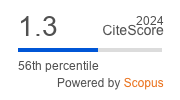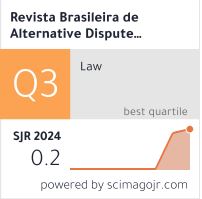Indigenous tourism as an instrument to avoid conflicts between Arctic development and indigenous resilience
Mots-clés :
Indigenous peoples, Tourism, Arctic, Russia, Conflict preventionRésumé
Over the last decades, tourism has experienced continued growth and deepening diversification to become one of the fastest-growing economic sectors in the Arctic. As a new phenomenon, Indigenous tourism is closely linked to sustainable development and encompasses a growing number of northern indigenous peoples and specific methods of interaction with nature and society. This research aims to focus on indigenous tourism as an effective tool for balancing emerging economies of the Arctic region and sustainable or resilient development of the Arctic aboriginal peoples who have been inhabiting this region for thousands of years. It suggests that Indigenous tourism and activities encompass several tools to prevent conflicts, reach decisions, raise environmental awareness, and teach sustainable values. This idea is relevant for all Arctic states where development is justified mainly by economic perspectives, not indigenous resilience. The topic is also appropriate for the global community because sustainable development is understood as the only possible future where people must correlate economic, environmental and social dimensions and prevent conflicts within those. The paper describes one Arctic region in the Russian Federation – the unique and intriguing Yamalo-Nenets Autonomous District. The author believes that this region, with its distinct opportunities and features, is a prime example of how indigenous tourism can be used as an instrument to avoid conflicts, taking into account sustainability factors, guaranteeing the interests of the indigenous population, and expanding the tourist experience towards sustainable values.
Références
Abryutina, L. & Chashchin, V. Lifestyle, Social and Economic Status of Indigenous Peoples. In: Persistent Toxic Substances, Food Security and Indigenous Peoples of the Russian North. Final Report, Oslo: AMAP Secretariat, pp. 17-39, 2004.
Barre, S., Maher, P., Dawson, J., Hillmer-Pegram, K. et al. Tourism and Arctic Observation Systems: exploring the relationships Polar Research, v. 35, n. 1, p. 24980, 2016, DOI: 10.3402/polar.v35.24980.
Berna Görmez, A. & Yaman, F.Y. Ethical Foundations of the Sustainability and the Sustainable Development. In: 3rd International Symposium on Sustainable Development, May 31 - June 01 2012, Sarajevo, pp. 425-436, 2012.
Chemchieva, A.P. Indigenous Tourism Development in Russia. Bulletin of Kemerovo State University, v. 4, n. 64. i. 1, pp. 44-48, 2015.
Chen, J.S. Tourism stakeholders attitudes toward sustainable development: A case in the Arctic. Journal of Retailing and Consumer Services, 2014. Retrieved from: http://dx.doi.org/10.1016/j.jretconser.2014.08.003i.
Commoner, B. The Closing Circle: Nature, Man, and Technology. New York: Alfred A. Knopf, 1971.
Fay, G., Karlsdóttir, A. Developing an Arctic Tourism Observation System Arctic Observing Network – Social Indicators Project, 2010. Retrieved from: http://www.iser.uaa.alaska.edu/projects/search-hd/index.htm.
Gladun, E. & Ahsan, D. BRICS Countries’ Political and Legal Participation in the Global Climate Change Agenda. BRICS Law Journal, v. 3, n. 3, pp. 8-42, 2016. https://doi.org/10.21684/2412-2343-2016-3-3-8-42.
Gladun, E. & Zakharova, O. State Environmental Ideology: From Tsarist Empire to Sustainable Russia. BRICS Law Journal, v. 4, n. 4, pp. 39-64, 2017. https://doi.org/10.21684/2412-2343-2017-4-4-39-64.
Holmes, A.P., Grimwood, B.S.R., King, L.J. & the Lutsel K’e Dene First Nation. Creating an Indigenized visitor code of conduct: the development of Denesoline self-determination for sustainable tourism. Journal of Sustainable Tourism, v. 24, n. 8, pp. 1-17, 2016. doi:10.1080/09669582.2016.1158828.
Hovelsrud, G.K., Poppel, B., van Oort, B. et al. Arctic Societies, Cultures, and Peoples in a Changing Cryosphere. AMBIO 40 (Suppl 1), pp. 100-110, 2011. https://doi.org/10.1007/s13280-011-0219-4.
Indigenous Peoples of the North. In: UNESCO Institute for Information Technologies in Education. Climate Change Adaptation: Traditional Knowledge of Indigenous Peoples Inhabiting the Arctic and Far North, 2014. Retrieved from: https://iite.unesco.org/courses/climate_change/en/pdf/IndigenousPeoplesNorth_en.pdf.
Kajan, E. An integrated methodological framework: engaging local communities in Arctic tourism development and community-based adaptation. Current Issues in Tourism, v. 16, n. 3, pp. 286–301, 2013.
Kulemzin, V.M. & Kulemzin, V.M. Man and nature in Khanty beliefs. Tomsk: Tomsk University Publishing House, 192 p., 1984.
Loktev, R.I. Prospects and Directions of Ethno-Cultural Tourism Development in Yamal-Nenets Autonomous Okrug. Bulletin of Kemerovo State University, n. 2 (62), v. 7, pp. 107-110, 2015.
Lukin, Y.F. Tourism in the Arctic: conceptual approaches, the potential of the regions. P.58-88. In: Arctic tourism in Russia (Edited by Yu.F. Lukin, E.A. Shepelev, N.K. Kharlampieva). Arkhangelsk – St. Petersburg, 257, pp. 2016.
Lukin, Yu. F. Arctic tourism in Russia. Arctic and North. v. 25. pp. 211-216, 2016.
McCool, S.F., Moisey, R.N. Tourism, recreation, and sustainability: linking culture and the environment. CABI, Wallingford/Cambridge, MA, 292 p., 2008.
Moldanov, T. & Moldanova, T. Essays on the traditional culture of the Khanty (Kh-Mansiysk), 350 p., 2010.
Moldanova, T.A. Ornithomorphic Symbolics in Folklore and Beliefs of the Khants. Vestnik TSPU, v. 4, n. 41, Series: Humanities (History, Archeology, Ethnology), pp. 95-98, 2004.
Sagalaev, A.M. Ural-Altai mythology: Symbol and archetype. Novosibirsk: Science. Siberian Department, 155 p., 1991.
Stewart, E.J., Draper, D., & Dawson, J. Coping with Change and Vulnerability: A Case Study of Resident Attitudes toward Tourism in Cambridge Bay and Pond Inlet, Nunavut, Canada. In: Polar Tourism: Human, Environmental and Governance Dimensions (Edited by P. T. Maher, E. J. Stewart and M. Lück). Putnam Valley, NY: Cognizant Communication Corporation, pp. 33–53, 2011.
Stonehouse, B. & Snyder, J.M. 2010. Polar Tourism an Environmental Perspective. Channel View Publications Bristol, Buffalo, Toronto, 217 pp., 2010.
Sustainable Tourism (March, 20. 2018). Retrieved from: http://www.biodiversity.ru/coastlearn/tourism-eng/con_tourism.html.
Syazi, A.M. Ornament and thing in the culture of the Khanty of the Lower Ob region. Tomsk: Publishing House of Tomsk University, 248 p., 2000.
Tussyadiah, I.P. Toward a theoretical foundation for experience design in tourism. Journal of Travel Research, v. 53, i. 5, pp. 543-564, 2014. doi:10.1177/0047287513513172
Usenyuk, S. & Gostyaeva, M. Arctic Tourism: The Design Approach with Reference to the Russian North. In The Interconnected Arctic – UArctic Congress 2016. (Edited by Latola K. & Savela H.) Springer Polar Sciences. Canada, 2016.
Téléchargements
Publié-e
Numéro
Rubrique
Licence
(c) Tous droits réservés Revista Brasileira de Alternative Dispute Resolution - Brazilian Journal of Alternative Dispute Resolution - RBADR 2024

Cette œuvre est sous licence Creative Commons Attribution 4.0 International.
No royalties or other compensation shall be due for the publication of the works.
The opinions expressed by the authors of the articles and reviews are their sole responsibility.









